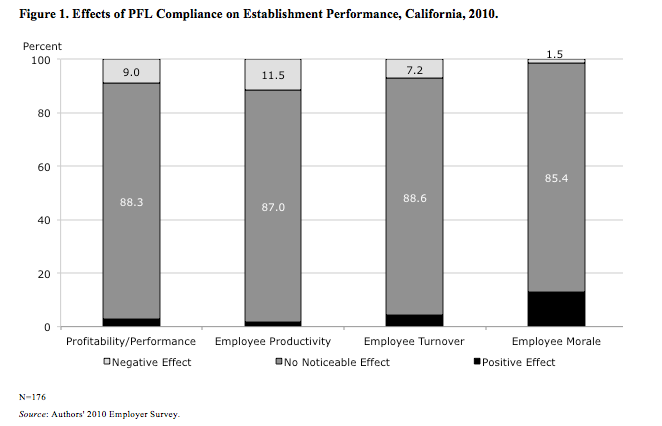August 02, 2018
Twenty-five years ago, the Family and Medical Leave Act (FMLA) went into effect. The law had a transformative effect on the US workplace. For the first time, employers were required to provide covered employees with unpaid leave for medical- and family-related purposes. This meant that that working people were now able to take up to 12 weeks of leave a year to bond with a new child, recover from serious illness, or care for a child, partner or parent suffering from a serious illness without fear of losing their jobs. Since implementation, women and men have used the FMLA for leave over 200 million times. The FMLA provides greater freedom for those employees covered and remains a remarkable first step towards the goal of balancing “the needs of the workplace with the needs of families.” But the law was just that, a first step.
Despite the new protections the law gave to working people, the United States continues to lag behind most other nations. In fact, we are the only country besides Papua New Guinea that offers no nation-wide paid maternity leave.
While the FMLA did give some protections to millions of working people, 40 percent of workers were left uncovered because they worked less than 1250 hours in the year or their workplaces have less than 50 employees. Many low-wage workers are challenged to choose between their paycheck and unpaid leave, especially if they work part-time. These are the workers who would benefit most from paid leave but only 6 percent of them have access to such policies.
It is increasingly clear that the US needs a comprehensive, universal, paid family leave policy at the federal level. Six jurisdictions are paving the way: California, New Jersey, Rhode Island, New York, Washington State and the District of Columbia have passed legislation creating paid family and medical leave programs. In a manner similar to unemployment insurance, workers in these states make small contributions to an insurance pool from which they can draw during their leave. This allows working people to take paid leave with little to no negative impact on the employer, as Eileen Appelbaum and Ruth Milkman demonstrate in the chart below from their examination of California’s experience with paid family leave.

The Family and Medical Insurance Leave (FAMILY) Act would take the intent behind the FMLA a step further, extending the benefits of these state programs to the rest of the nation. The Family Act – sponsored by Rep. Rosa DeLauro (D-CT) and Sen. Kirsten Gillibrand (D-NY) would give workers 12 weeks of partial income when on leave. It would be funded by employee and employer payroll contributions of less than $1.50 per week and cover all workplaces.
Perhaps in recognition of overwhelming support for paid leave policies, alternative leave proposals have emerged from more conservative corners. President Trump’s February Budget Blueprint called for six weeks of paid leave. Aside from only offering six weeks, the plan’s funding mechanism would draw from states’ unemployment insurance programs, further jeopardizing unemployment benefits for people who lose their jobs.
The President’s daughter, Ivanka, has often touted the need for paid leave in talks, briefings and hearings. But the leave envisioned by the younger Trump and Sen. Marco Rubio (D-FL) would allow people to pay for their leaves by drawing from their future Social Security benefits, thus threatening the retirement security of millions, particularly the most vulnerable. The plan would only cover new children, or 75 percent of the leaves covered by the FAMILY Act, and fails to protect workers from retaliation by their employers if they take leave.
This August 5th, we should rightly celebrate the FMLA’s implementation. But we should also remember that we must aim higher until the US catches up to the rest of the world. Though legislators on both sides of the aisle are now voicing their support for paid family leave, the FAMILY Act remains the best realization of the FMLA’s promise of providing truly universal and comprehensive paid leave.






